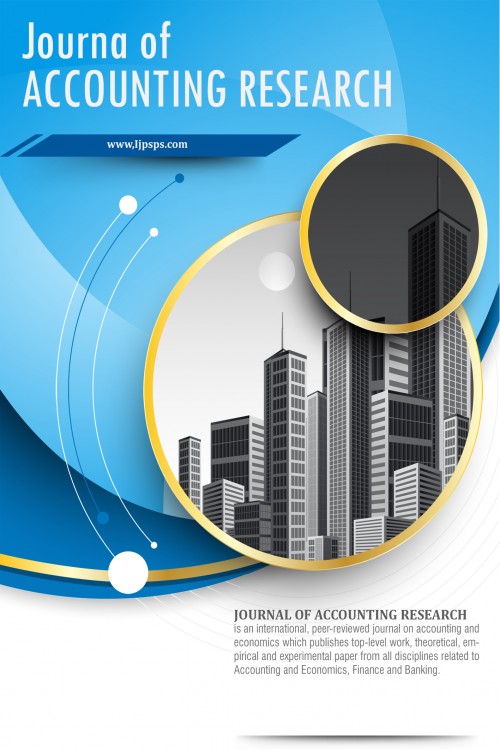
Development of the Beneish Model by Combining Artificial Neural Network and Particle Swarm Optimization Algorithm for Earnings Management Prediction
Abstract
According to Beneish (1999), “earnings manipulation happens as an instance where management violates Generally Accepted Accounting Principles (GAAP)inordertobeneficiallyrepresentthefirm’s financial performance.” In this research, the development of the Beneish model (DBM) was done by emphasizing non-accounting variables, including Information Asymmetry (IS) and Product Market Competition (PMC). The data was collected for 184 companies listed in the Tehran Stock Exchange (TSE) during the past 11 years 2006-2017. The coefficients of models were estimated by trained Artificial Neural Network (ANN) through the PSO algorithm. To provide the potential of comparability, ten run with 300 iterations in each run were done for both the Beneish model (BM) and (DBM), then were stopped after convergence. Research results indicate that the training error of ANN trained by the PSO algorithm measured by mean square error (MSE) was reduced from 0.0807 to 0.0777 by the development of BM. The area under Receiver Operating Characteristic (ROC) for BM was calculated up to 0.5792, which is located in a very low confidence range of 0.5-0.6, indicating failed test results and a high prediction error of up to 39.74 percent. Consequently, the best cut-off point and the best precision for BM were estimated to be 0.5021, and 60.26 percent, by the maximum accuracy method, respectively. Furthermore, the results show that the AUC for DBM was increased to 0.6335 through incorporating environmental variables of Product Market Competition (PMC) and information symmetry (IS) to the BM, which is still out of an acceptable range of 0.7–0.8 for a relatively good test, indicating poor test result and high model prediction error up to 32.58 percent. Consequently, the best cut-off point and the best precision for DBM were estimated to be 0.5304, and 67.42 percent by the intersection point of minimum distance and Youden's index, respectively. Incorporating PMC and IS variables into the original model of Beneish decreased model prediction error from 39.74 to 32.58 percent, which is not statistically significant. Nevertheless, this fact improved the predictive power of the BM slightly insignificant. The findings indicate that the BM is a random model in the Iranian capital market and is impotent to detect two groups of earning manipulator and non-earning manipulator companies. Although findings indicate that the DBM is a little bit more powerful than the BM and confirm that the impact of environmental variables of PMC and IS is slightly insignificant, indicating the test outcome is still weak and the DBM is an approximately random model in identifying two groups of earning manipulator and non-earning manipulator companies.